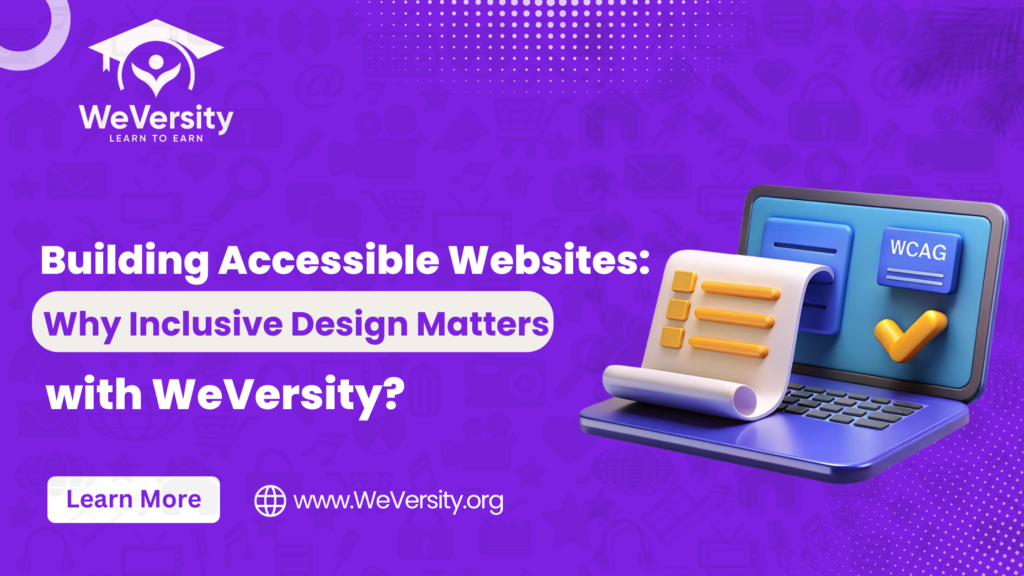
In today’s digital age, websites play an essential role in connecting people to information, services, and communities. Yet, not all websites are created with everyone in mind. Millions of individuals worldwide face barriers when trying to access online content because websites are not designed inclusively. This is where accessible website design—or inclusive design—comes in.
Accessible websites ensure that all users, including those with disabilities, can navigate and interact with online content with ease. By embracing inclusive design principles, businesses and organizations not only adhere to ethical standards but also unlock benefits for their audience, reputation, and bottom line.
Inclusive design means creating digital experiences that work for everyone, regardless of their physical, sensory, or cognitive abilities. It accounts for a wide range of users, including:
People with visual impairments, such as blindness or color blindness
People with hearing impairments
People with mobility challenges who may use assistive devices like screen readers or adaptive keyboards
People with cognitive or learning disabilities
The goal is simple: to make the web accessible to as many people as possible.
Governments worldwide are enforcing regulations to ensure websites are accessible. For example, the Americans with Disabilities Act (ADA) in the United States and the Web Content Accessibility Guidelines (WCAG) provide frameworks to guide organizations in meeting accessibility standards. Failure to comply can result in legal action and hefty fines.
Beyond legal requirements, designing accessible websites is simply the right thing to do. Everyone deserves equal access to online resources, and inclusive design promotes fairness and equality.
Around 1 billion people—15% of the world’s population—live with some form of disability. By ignoring accessibility, you’re potentially excluding a significant portion of your audience. Inclusive design ensures that your content reaches as many people as possible, expanding your audience base.
Accessibility features often benefit all users, not just those with disabilities. For example:
Captions for videos help people in noisy environments.
Clear navigation benefits users unfamiliar with your website.
Keyboard shortcuts improve efficiency for everyone.
Accessible websites tend to perform better in search engine rankings. Features like proper heading structure, descriptive alt text for images, and logical navigation improve website usability and SEO. Search engines, like Google, prioritize websites that offer a good user experience, which often aligns with accessibility best practices.
To make your website more inclusive, follow these fundamental principles:
Ensure that users can perceive the information on your website. This includes:
Adding alt text to images so screen readers can describe them.
Using high-contrast colors to make text readable.
Providing captions and transcripts for audio and video content.
Make sure users can interact with your website. For instance:
Enable keyboard navigation for users who can’t use a mouse.
Provide sufficient time for users to complete tasks, such as filling out forms.
Avoid design elements that may trigger seizures, like flashing animations.
Content should be easy to read and navigate. This involves:
Using simple language and short sentences.
Organizing content with clear headings and logical structure.
Providing error messages that are easy to understand and offer solutions.
Ensure your website works with a wide range of devices and assistive technologies, such as:
Screen readers
Voice recognition software
Adaptive keyboards
Semantic HTML elements, such as <header>, <main>, and <footer>, help structure your content and make it easier for screen readers to interpret.
Alt text describes the content of an image for users who can’t see it. Be specific and concise. For example, instead of saying, “Image of a dog,” say, “Golden retriever playing in a park.”
Test your website to ensure all features can be accessed using only a keyboard. Focus on navigation, form controls, and interactive elements like buttons.
Screen readers like JAWS or NVDA provide insights into how users with visual impairments experience your website. Regular testing helps you identify and fix barriers.
For multimedia content, include captions for videos and transcripts for audio. These alternatives make your content accessible to users with hearing impairments.
Ensure your text stands out against the background. Contrast ratio tools, like WebAIM’s Contrast Checker, can help you meet WCAG standards.
Clear menus, logical page structures, and descriptive link text (“Learn more about our services” instead of “Click here”) improve accessibility for all users.
Several tools can help you evaluate and improve your website’s accessibility:
Wave: An accessibility evaluation tool that highlights errors and suggests improvements.
Axe: A browser extension for testing accessibility issues.
Color Contrast Analyzer: A tool to check color contrast ratios.
Keyboard Testing: Manually navigate your website using only a keyboard.
An e-commerce store revamped its website to meet WCAG standards. The result? A 25% increase in sales and a surge in positive customer feedback from users with disabilities.
A government website improved its accessibility by adding alt text, simplifying navigation, and optimizing for screen readers. This led to higher engagement rates and fewer customer support requests.
Many businesses are unaware of accessibility guidelines. Educating your team about WCAG standards and the importance of inclusive design is a good starting point.
Some organizations fear that accessibility improvements will be expensive. However, making small, incremental changes can significantly enhance usability without breaking the bank.
Accessibility guidelines evolve over time. Regular training and updates ensure your website remains compliant.
As technology advances, inclusive design will become even more critical. Features like voice-activated interfaces, AI-driven accessibility tools, and augmented reality are reshaping how people interact with digital content. By prioritizing accessibility now, you’re future-proofing your website for a more inclusive digital landscape.
Building an accessible website is not just about meeting legal requirements or improving SEO. It’s about creating a web that works for everyone. Inclusive design fosters equality, improves user experience, and expands your reach to a diverse audience. By embracing accessibility, you’re not only doing good but also positioning your business for long-term success.